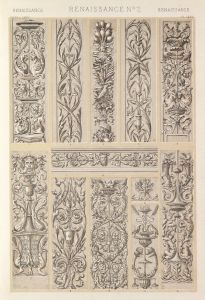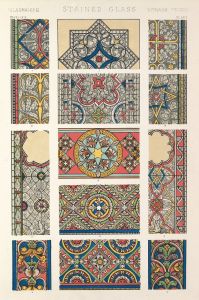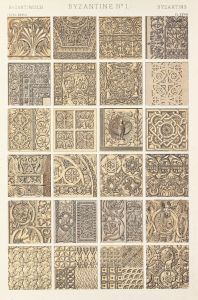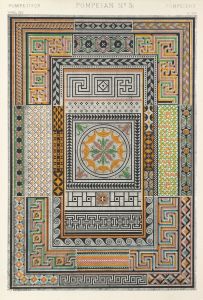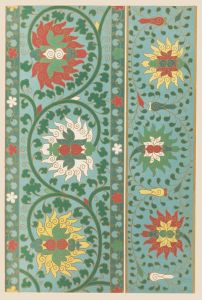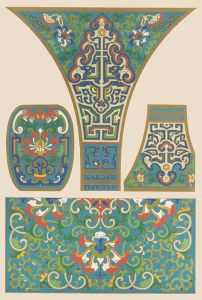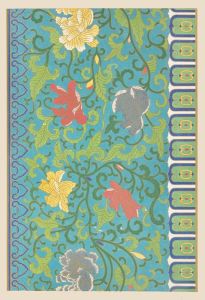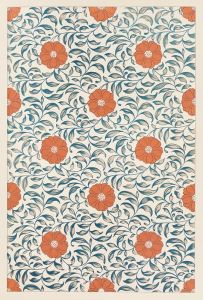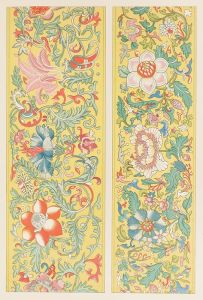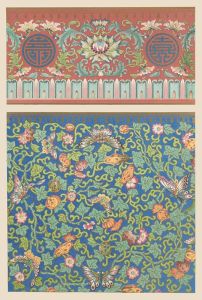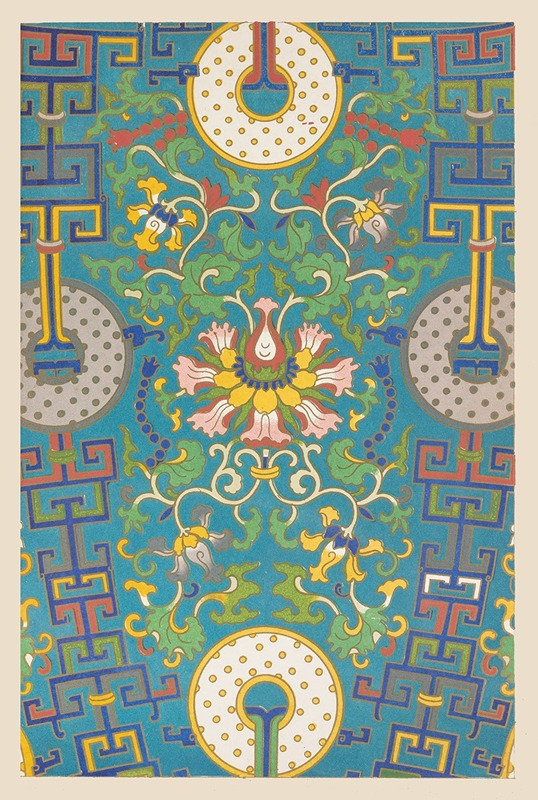
Examples of Chinese ornament, Pl.30
A hand-painted replica of Owen Jones’s masterpiece Examples of Chinese ornament, Pl.30, meticulously crafted by professional artists to capture the true essence of the original. Each piece is created with museum-quality canvas and rare mineral pigments, carefully painted by experienced artists with delicate brushstrokes and rich, layered colors to perfectly recreate the texture of the original artwork. Unlike machine-printed reproductions, this hand-painted version brings the painting to life, infused with the artist’s emotions and skill in every stroke. Whether for personal collection or home decoration, it instantly elevates the artistic atmosphere of any space.
"Examples of Chinese Ornament, Pl.30" is a plate from the influential design book The Grammar of Ornament, authored by Owen Jones and first published in 1856. Owen Jones (1809–1874) was a British architect and designer, renowned for his contributions to the study of design principles and decorative arts. His work aimed to document and analyze ornamental styles from various cultures around the world, promoting their use in contemporary design.
Plate 30 specifically showcases examples of Chinese ornamentation, reflecting Jones's interest in the rich decorative traditions of China. The designs featured in this plate are drawn from historical Chinese art and architecture, including motifs commonly found in ceramics, textiles, and other decorative objects. These motifs often include intricate patterns, floral designs, and symbolic imagery, which were characteristic of Chinese aesthetics. Jones's depiction of these ornaments was intended to highlight their symmetry, balance, and use of color, which he admired and sought to introduce to Western design practices.
In The Grammar of Ornament, Jones emphasized the importance of studying and respecting the design principles of different cultures. He believed that Chinese ornamentation, like other styles he documented, demonstrated universal principles of beauty and harmony. His work was part of a broader 19th-century movement to incorporate global artistic traditions into European design, reflecting the growing interest in cross-cultural exchange during the period.
The illustrations in Plate 30, like others in the book, were created using chromolithography, a then-innovative printing technique that allowed for vibrant and precise color reproduction. This method was essential for accurately conveying the intricate details and vivid hues of the original Chinese designs. The use of chromolithography in The Grammar of Ornament was groundbreaking and contributed to the book's lasting influence on the fields of design and art education.
While the specific sources of the Chinese designs in Plate 30 are not detailed in the book, they are representative of the broader aesthetic traditions of Chinese decorative art. Jones's work does not aim to provide a comprehensive history of Chinese ornamentation but rather to distill its visual and structural principles for inspiration and study.
The Grammar of Ornament remains a significant reference in the history of design, and Plate 30 serves as an example of how Owen Jones sought to celebrate and disseminate the artistic achievements of diverse cultures, including those of China.





